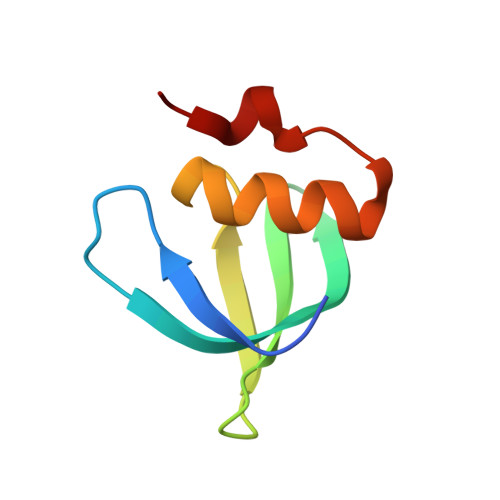Structure of Sla1p homology domain 1 and interaction with the NPFxD endocytic internalization motif.
Mahadev, R.K., Di Pietro, S.M., Olson, J.M., Piao, H.L., Payne, G.S., Overduin, M.(2007) EMBO J 26: 1963-1971
- PubMed: 17363896
- DOI: https://doi.org/10.1038/sj.emboj.7601646
- Primary Citation of Related Structures:
2HBP - PubMed Abstract:
Adaptor proteins play important endocytic roles including recognition of internalization signals in transmembrane cargo. Sla1p serves as the adaptor for uptake of transmembrane proteins containing the NPFxD internalization signal, and is essential for normal functioning of the actin cytoskeleton during endocytosis. The Sla1p homology domain 1 (SHD1) within Sla1p is responsible for recognition of the NPFxD signal. This study presents the NMR structure of the NPFxD-bound state of SHD1 and a model for the protein-ligand complex. The alpha+beta structure of the protein reveals an SH3-like topology with a solvent-exposed hydrophobic ligand binding site. NMR chemical shift perturbations and effects of structure-based mutations on ligand binding in vitro define residues that are key for NPFxD binding. Mutations that abolish ligand recognition in vitro also abolish NPFxD-mediated receptor internalization in vivo. Thus, SHD1 is a novel functional domain based on SH3-like topology, which employs a unique binding site to recognize the NPFxD endocytic internalization signal. Its distant relationship with the SH3 fold endows this superfamily with a new role in endocytosis.
Organizational Affiliation:
CR-UK Institute for Cancer Studies, School of Medicine, University of Birmingham, Birmingham, UK.


















